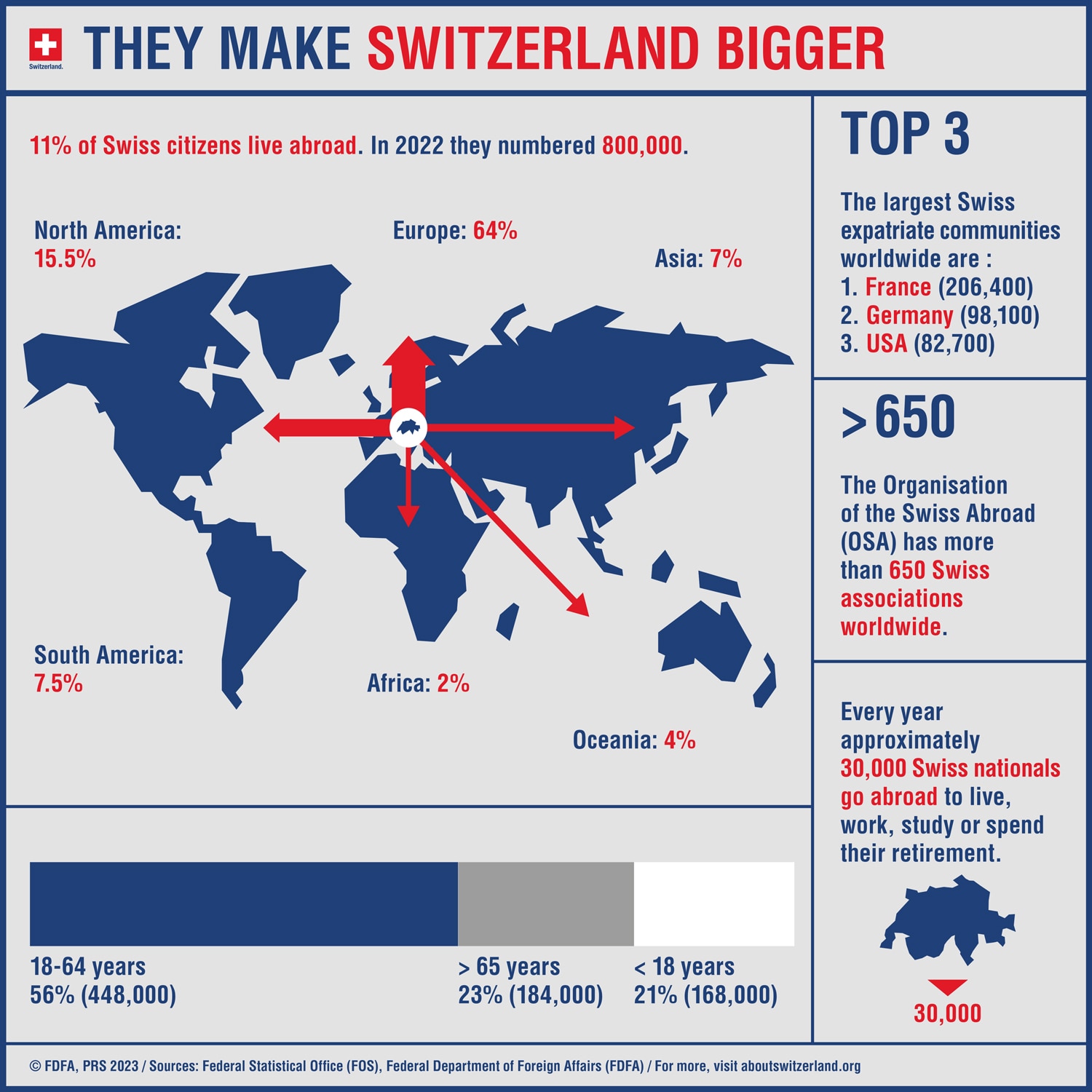Switzerland's population is shaped by emigration and immigration. More and more Swiss nationals are choosing to live abroad. At the same time, a quarter of the total population are foreign nationals.
Emigration and immigration
A growing proportion of Swiss citizens live abroad – currently more than one in ten. Between the 15th and 18th centuries, people left Switzerland to work as mercenaries or to escape poverty and sectarian conflicts. Today, those leaving include employees, students, researchers and artists who tend to leave Switzerland only temporarily in order to study or to broaden their professional experience – or pensioners who choose to spend their retirement abroad. Three quarters of the emigrants have multiple nationalities.
France and Germany the most popular destinations
Two thirds of Swiss nationals living abroad choose to do so in another European country – most of them in France and Germany. Outside Europe, most are drawn to the United States, Canada and Australia.
At the same time, Switzerland has a high proportion of foreign nationals – a full quarter of the population do not have a Swiss passport. However, more than one fifth of the foreign resident population was born or grew up in Switzerland. Around 40% of the Swiss population has a migration background. The high proportion of foreign nationals reinforces the country's already multicultural character.
Italians and Germans the largest foreign community
With just over 300,000 people each, Italians and Germans are the largest foreign communities in Switzerland, followed by Portuguese and French. To date, more than three quarters of immigrants have come from other European countries. However, the proportion of people with non-European passports is increasing year on year.
From a regional perspective, the proportion of foreign nationals varies greatly, depending on the degree of urbanisation, economic structure and proximity to the border. For example, the proportion of foreign nationals in the canton of Geneva is 40%, while in the canton of Uri it is slightly more than 10%.

